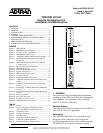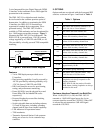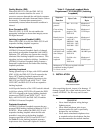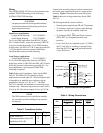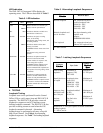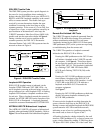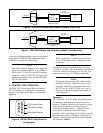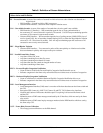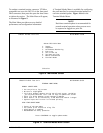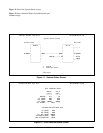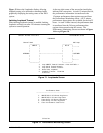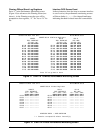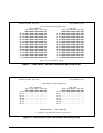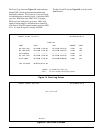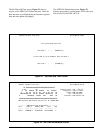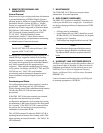
6 61220010L2-5, Issue 3 61220010L2-5C
IDSL/DDS Trouble Code
The IDSL/DDS system provides a quick diagnosis in
the case of a circuit condition where continuity is
broken when the IDSL/DDS circuit uses ADTRAN U-
BR1TEs with DDS Loopback capability in the central
office or remote terminal. The trouble code type
received by a tester determines whether the open
condition is occurring on the local loop or at the
customer premises. In the event of a 2-wire DSL loss
of signal, loss of sync, or open condition caused by an
open conductor or disconnected 2-wire loop, the
U-BR1TE transmits a Mux-Out-of-Sync (MOS 9Ah)
trouble code into the network as shown in Figure 4.
During a similar out-of-service condition at the
customer premises, the IDSL OCU-R transmits
Abnormal Station Code (ASC 9Eh) upstream into the
network as shown in Figure 4.
Remote End Initiated LBK Tests
The U-BR1TE supports loopbacks generated from the
IDSL OCU-R which allow testing to be performed
without coordination with the CO or test center.
Loopbacks initiated by the IDSL OCU-R front panel
LBK pushbutton (SW2) aid in system turn-up testing
or troubleshooting from the remote end.
The U-BR1TE responds to a loopback command
initiated at the IDSL OCU-R as follows:
Pressing the LBK pushbutton on the OCU-R once
will initiate a loopback at the U-BR1TE towards
the customer. See Figure 6. This allows data to
be sent from the remote end to test the local loop
and the IDSL OCU-R. This loopback is indicated
by a flashing CUST LBK LED on the IDSL
OCU-R and a flashing TEST LED (D4) on the
U-BR1TE.
Pressing the OCU-R LBK pushbutton a second
time initiates a loopback at the IDSL OCU-R
towards the 4-wire DDS (CPE) interface. A solid
CUST LBK on the IDSL OCU-R indicates a
loopback at the IDSL OCU-R towards the
customer equipment.
See Figure 7.
Pressing the OCU-R LBK pushbutton a third time
disables all current loopbacks initiated by the
OCU-R LBK pushbutton.
If errors exist the loopbacks can help determine the
source; either the local loop or the IDSL OCU-R.
During a remote end initiated loopback the IDSL/DDS
system transmits ASC 9Eh towards the network,
indicating an out-of-service condition generated by
the remote end, as shown in Figures 6 and 7.
All latching loopbacks, whether initiated by the craft
interface, LBK pushbutton, CO, or from a remote test
center, can be released by sending 35 DDS loop down
TIP bytes <X0111010> (where X is a “don’t care” bit).
Loopback LED Operation
IDSL OCU-R loopback status is indicated via the
faceplate NTWK LBK and CUST LBK LEDs. An
active loopback occurring at the unit being viewed is
always indicated via a solid loopback LED. A flashing
loopback LED indicates a loopback condition at the
far end unit. When a loopback towards the network is
initiated, the NTWK LBK LED on the faceplate of the
IDSL OCU-R is illuminated. A loopback generated
towards the customer illuminates the CUST LBK LED.
ADTRAN U-BR1TE Bidirectional Loopback
The ADTRAN U-BR1TE will execute a bidirectional
loopback when performing DS0 DP loopbacks. Refer to
Figure 5 for an illustration of the bidirectional loopback.
Figure 4. IDSL/DDS Trouble Codes
Figure 5. ADTRAN U-BR1TE Bidirectional
Loopback
Test
Set
IDSL OCU-R
ADTRAN
U-BR1TE
Bidirectional
loopback



